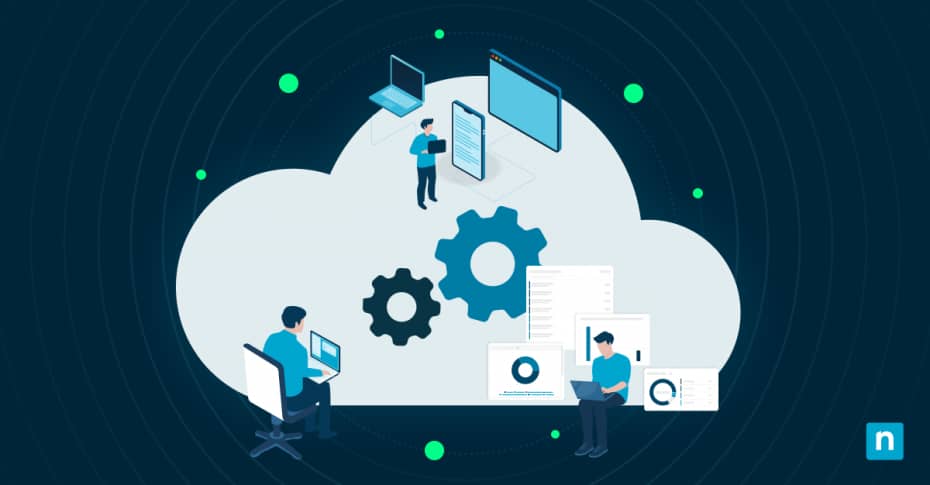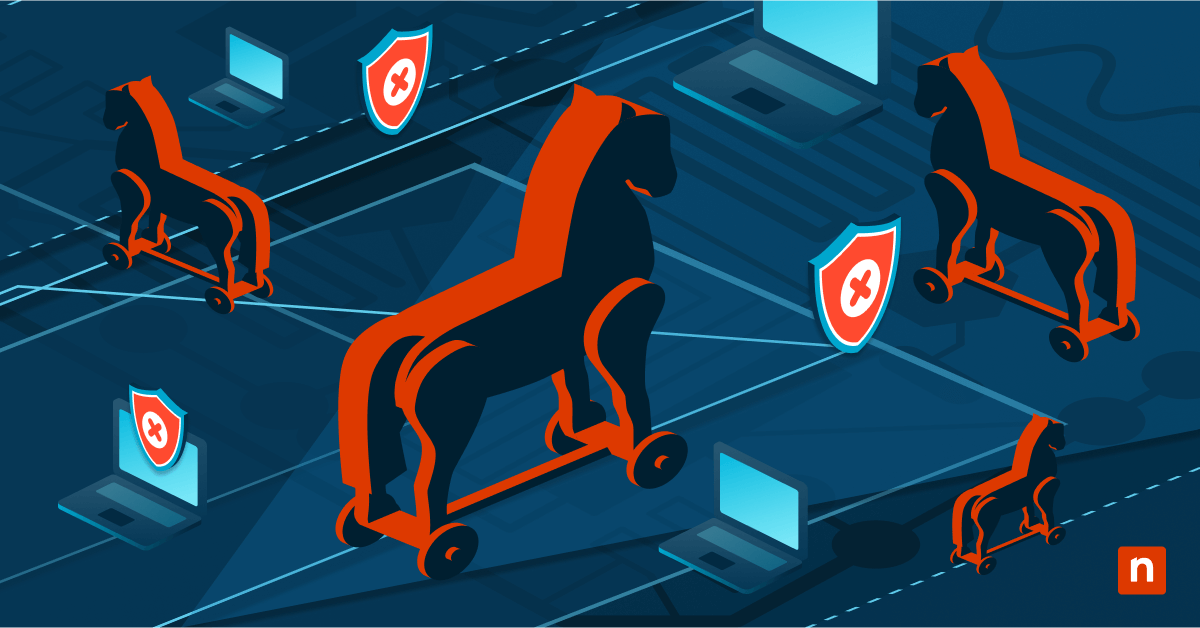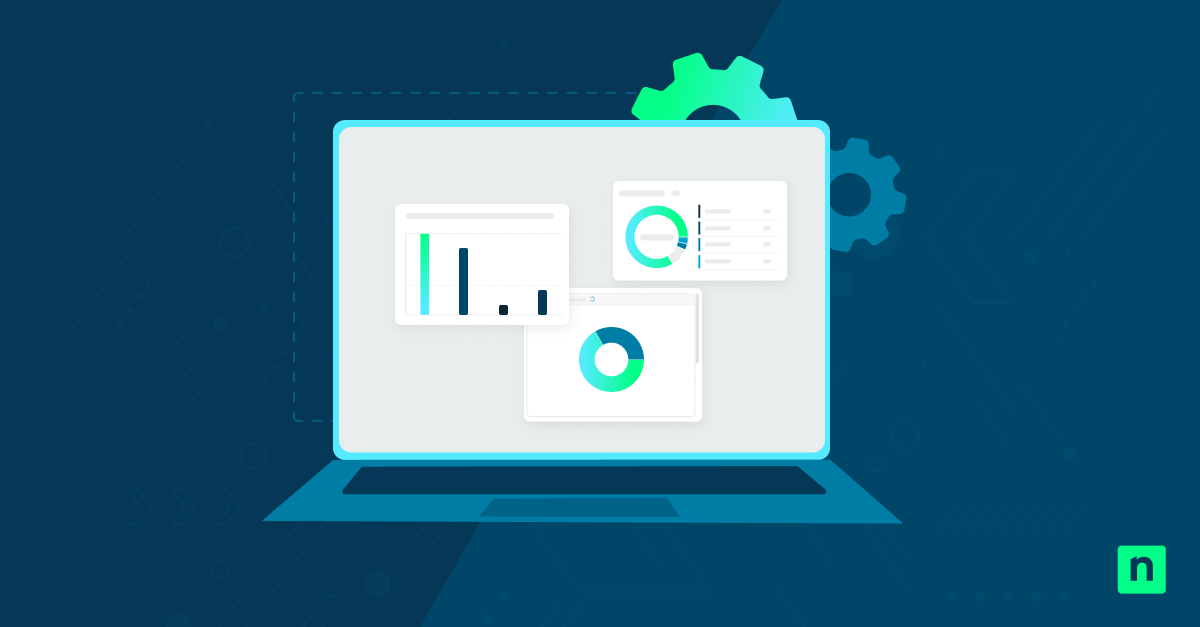IT knowledge management (ITKM) encompasses defined processes and ongoing adherence to them in practice, most commonly resulting in a knowledge base that comprehensively documents your IT operations.
IT knowledge management (ITKM) is vital to the ongoing efficiency and long-term success of IT operations in organizations of any size, as well as for managed service providers (MSPs) who must be able to quickly find and access information for diverse clients with varied infrastructure, users, and expectations.
Maintaining an up-to-date knowledge base using IT knowledge management best practices results in easier access to historical troubleshooting information, faster onboarding for new staff, and the preservation of organizational and historical knowledge. All of which leads to faster ticket resolutions and improved reliability of your infrastructure.
This guide explains how IT knowledge management improves your IT service management processes, and how it can be implemented with minimal friction — so that your teams can immediately benefit from the availability of structured, accurate knowledge.
Introduction to IT knowledge management
Knowledge management must address issues such as recording tacit knowledge that is based on the individual experiences of each team member. This knowledge can be difficult to understand out of context, and along with implicit knowledge (that has not been formalized and has evolved with the specific requirements of an organization, becoming part of just ‘how things are done’) can be challenging to communicate and organize.
These issues are particularly notable in IT operations due to the highly varied requirements of each organization and the differences between vendors’ configuration tools, as well as varying end-user requirements. Even the most carefully planned and implemented network will soon see workarounds introduced. For example, a network printer being connected to a nearby workstation via USB due to a faulty Ethernet port, or a user requiring local administrative privileges on their workstation to run development software.
Even seemingly minor inconsistencies like these can quickly build up and delay the resolution of support requests if they are unknown to the support agent. It is important that all information relevant to the ongoing maintenance of your IT infrastructure and support of your users is codified as explicit knowledge in a centralized resource using IT knowledge management best practices.
Effective IT knowledge management results in faster incident resolution with reduced repeat issues, and enhances collaboration across IT teams, allowing team members to work in lock-step towards the same goal. At an organizational level, this results in reduced IT overheads, increased user satisfaction, as well as increased flexibility and scalability.
What IT knowledge management involves
There are several key steps that most IT knowledge management frameworks follow. Information must be captured at the time of creation. At this stage, this may just be as rough notes by an on-site engineer or as log files from a monitoring platform. Information must then be structured and stored in a way that is easily found and understood.
Knowledge must also be shared among team members. This is not just a technical feat: while the information must be stored in a platform that all team members can access when and where they need it, it must also be shared in a format that is appropriate and conveys the information accurately and practically. For example, the steps for manually configuring a new network device may be presented as step-by-step instructions, whereas the firewall rules that must be configured may be presented as a table. If your knowledge base is also accessible to end users for self-service, you may also provide friendly FAQs or tutorials for troubleshooting common issues.
IT knowledge management frameworks and methodologies (ITIL, KCS)
A popular framework for IT teams to build their IT processes is ITIL (Information Technology Infrastructure Library). This is a set of generalized practices that authorized stakeholders should have access to when it is needed.
Knowledge-centered service (KCS) is a set of procedures that aims to realize the full value of organizational knowledge by iterating on it through a process of information capture, structuring, reuse, and improvement. In KCS, knowledge is generated during the process of solving problems, then recorded.
ITKM implementation strategies and best practices
When implementing an ITKM framework or developing your own methodologies, you should ensure that you are recognizing the unique needs of your business (or, in the case of MSPs, your customers).
You should build a single source of truth as your knowledge base: rather than leaving pertinent information siloed in different tools, it should be integrated into a single location where all stakeholders can access it. A role-based permissions system should be used to protect sensitive data so that it cannot be used against your infrastructure or users. When new team members are onboarded, they should be educated on how the knowledge base is to be maintained, and granted an appropriate level of access.
You should also ensure that your knowledge base is properly curated and regularly reviewed by a dedicated management team familiar with the subject. Outdated information can be easily mistaken as being currently applicable, leading to increased friction and wasted time. Your knowledge team should also regularly audit your knowledge base for missing information, and review its outcomes to ensure it is meeting its goals.
Ownership is a key concept in ITKM — team members should be responsible for ensuring that ‘tribal’ knowledge is not lost to employee turnover or memory lapses, and that information is properly recorded as part of the knowledge management process. By making historical information about end-user problems readily available, repeat issues can be solved without the need for troubleshooting, often allowing tier 1 support agents to handle issues previously solved by more experienced tier 2 technicians.
IT Knowledge management tools & platforms
The tools you use in IT knowledge management will generally depend on your requirements, but will necessitate a centralized knowledge base. This may take the form of a wiki, a file-based system, help desk integration, or asset management solution.
Some examples of dedicated knowledge management systems include Confluence, Guru, IT Glue, and SharePoint.
Key features to be aware of when choosing a knowledge base platform for your ITKM project include:
- Availability: Web-based tools are the standard for knowledge management as they can be accessed from practically any device.
- Structure and Search: Search functionality is a necessity so that information can be found. Categorization is also important.
- Permissions: It will be necessary to store potentially sensitive information about configurations or private information about end users. This information must be protected.
- Integrations: Choosing tools that can be easily integrated allows for information to be easily imported from the source in real time.
- Automation/AI: Modern AI technologies allow for vast amounts of information to be summarized and can provide additional insights, making it easy to locate and understand information.
Improve IT efficiency with NinjaOne
Capturing knowledge is the first step in IT knowledge management, and it doesn’t always have to be a manual process. By adopting monitoring, help desk, and management tools that make their data available through APIs, you can ensure that all important information is recorded in your knowledge base and indexable by your knowledge management tools.
For example, NinjaOne IT management unifies endpoint management, remote monitoring (of both end-user devices and network hardware), mobile device management (MDM), patch management, and backup, with an IT helpdesk and ticketing system with one-click remote access. Support requests and the associated historical knowledge are retained for posterity, and asset management is kept up-to-date with real-time data — all accessible through a REST API, so that you can extend our platform and implement IT knowledge management using the framework and practices that fit your unique operational requirements.







